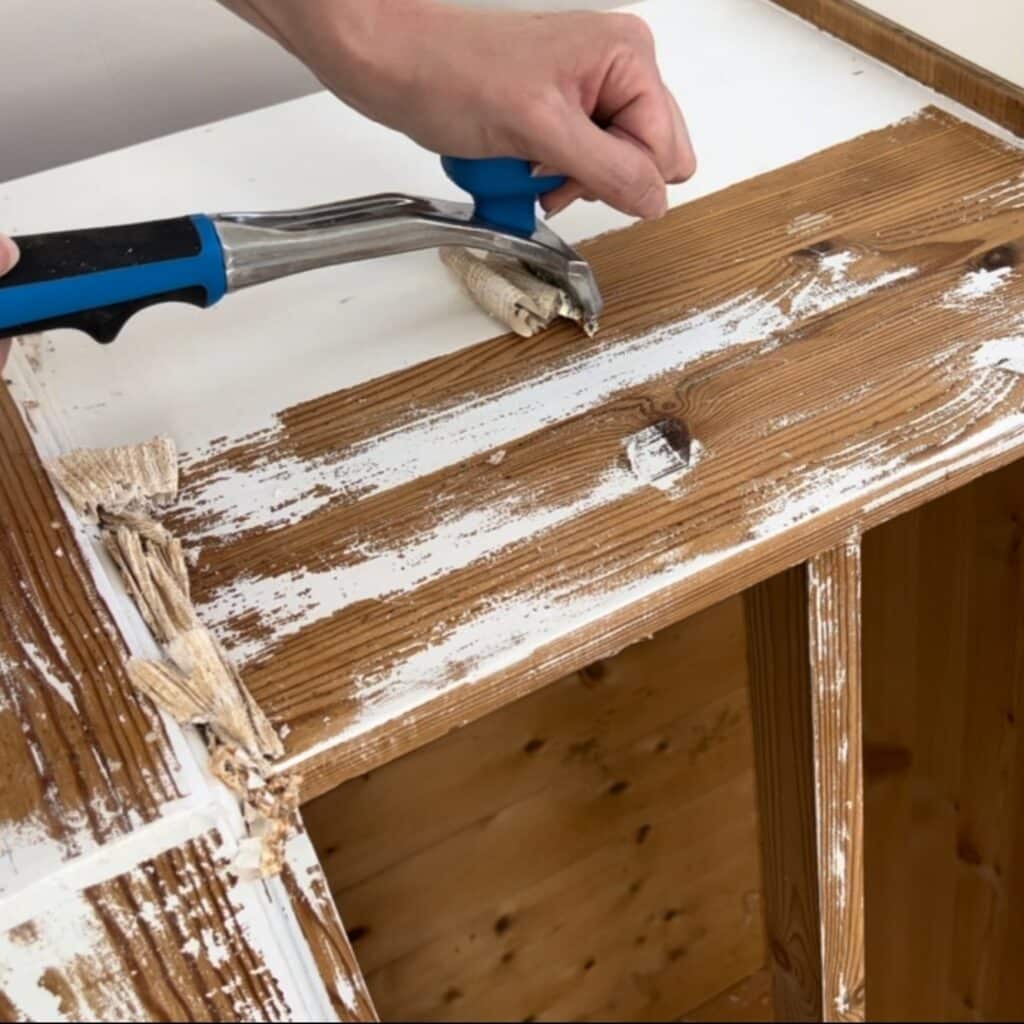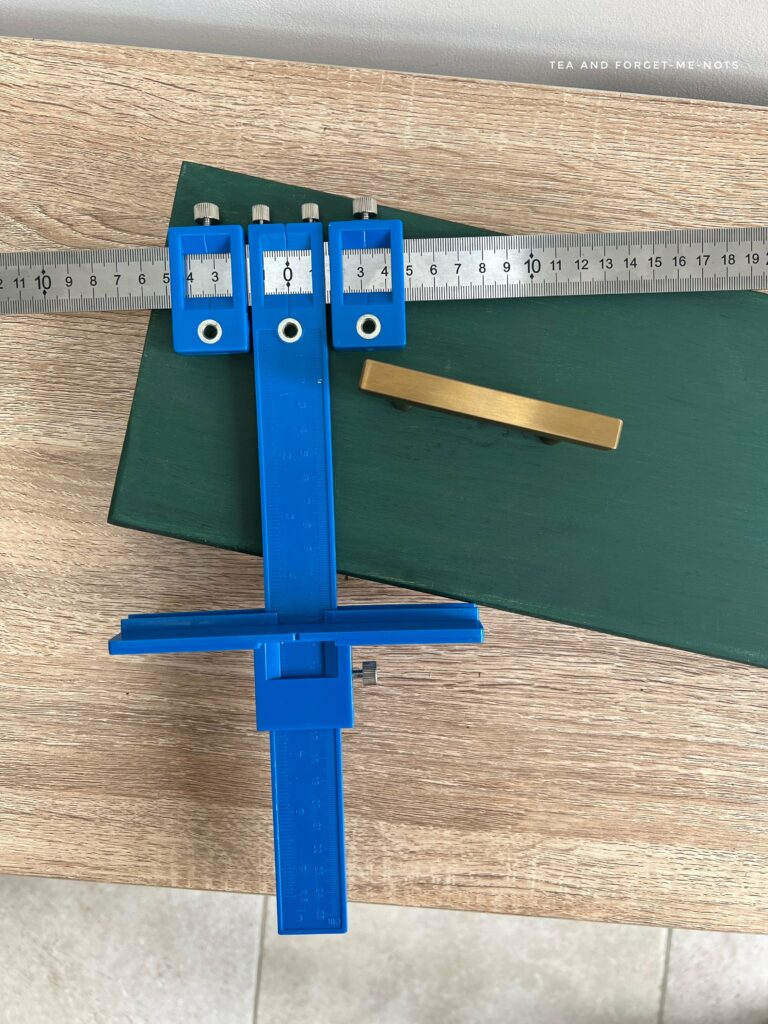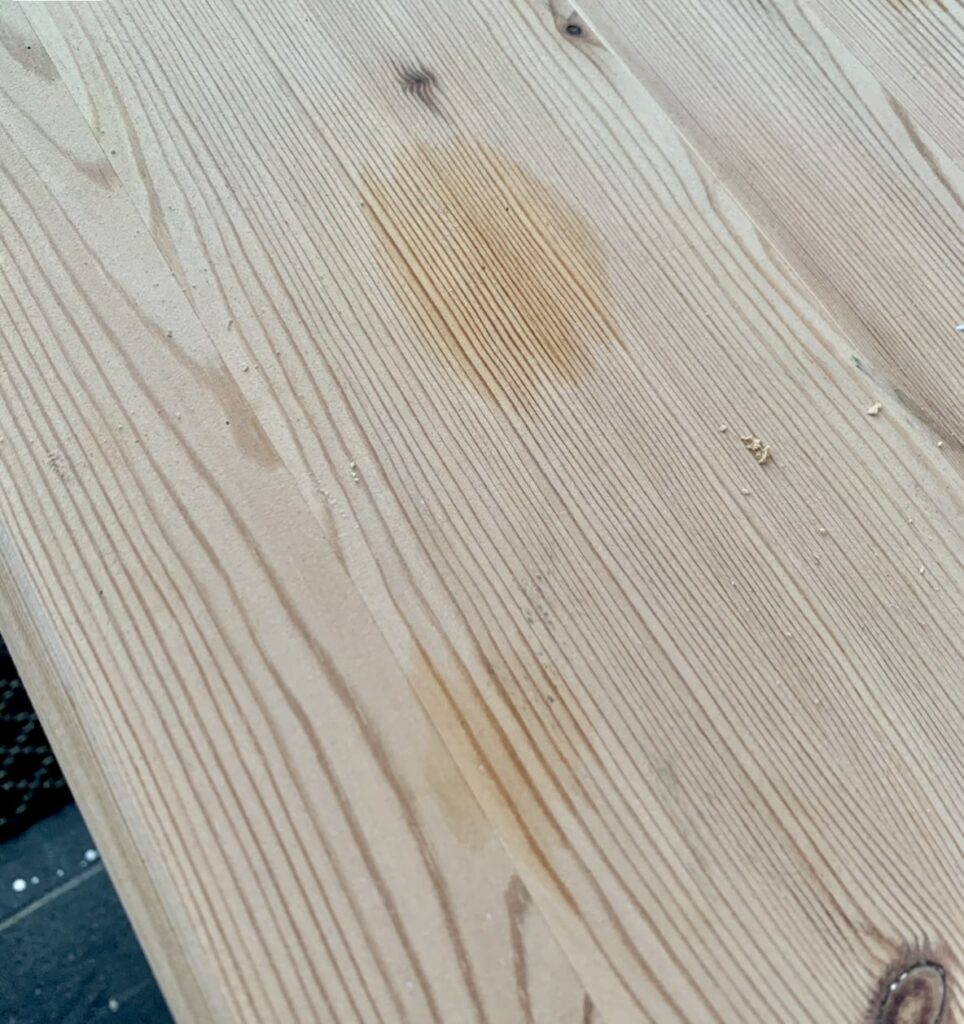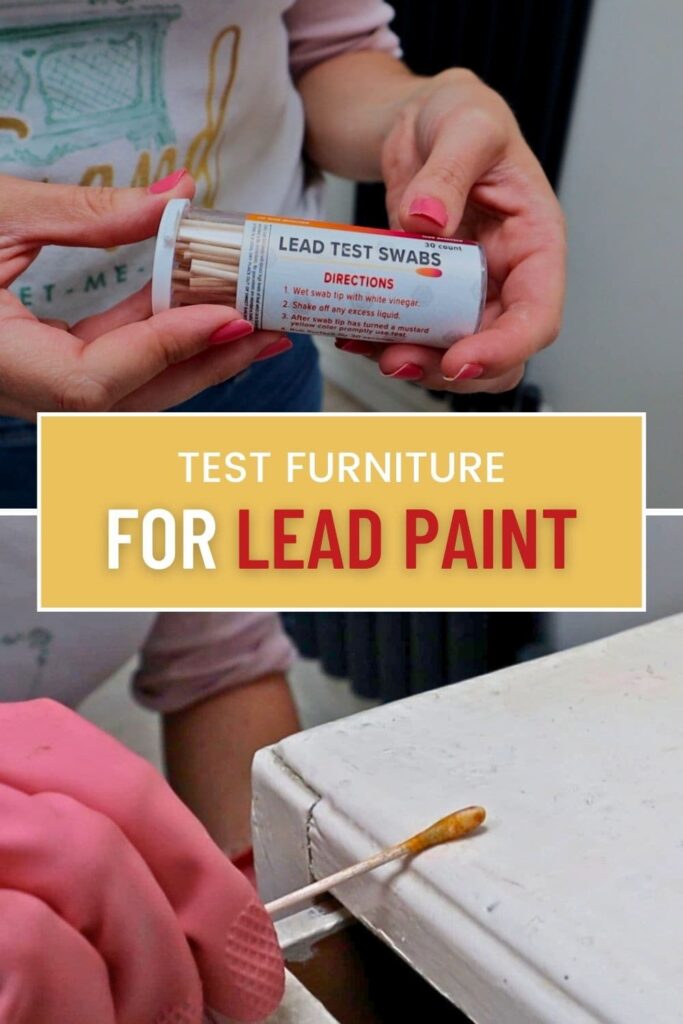Need to Test Old Furniture for Lead Paint? Here’s What You Need to Know.
Your old furniture could be hiding lead paint! Here’s how to safely test old furniture for lead paint and how to manage finding it.
Whether you’re refinishing a piece for your own family or to sell, lead paint needs to be dealt with. Which means either safely removing it, or covering it with specialist paint.
If you’re not confident in how to manage lead paint on old furniture pieces, it should be dealt with by a professional.
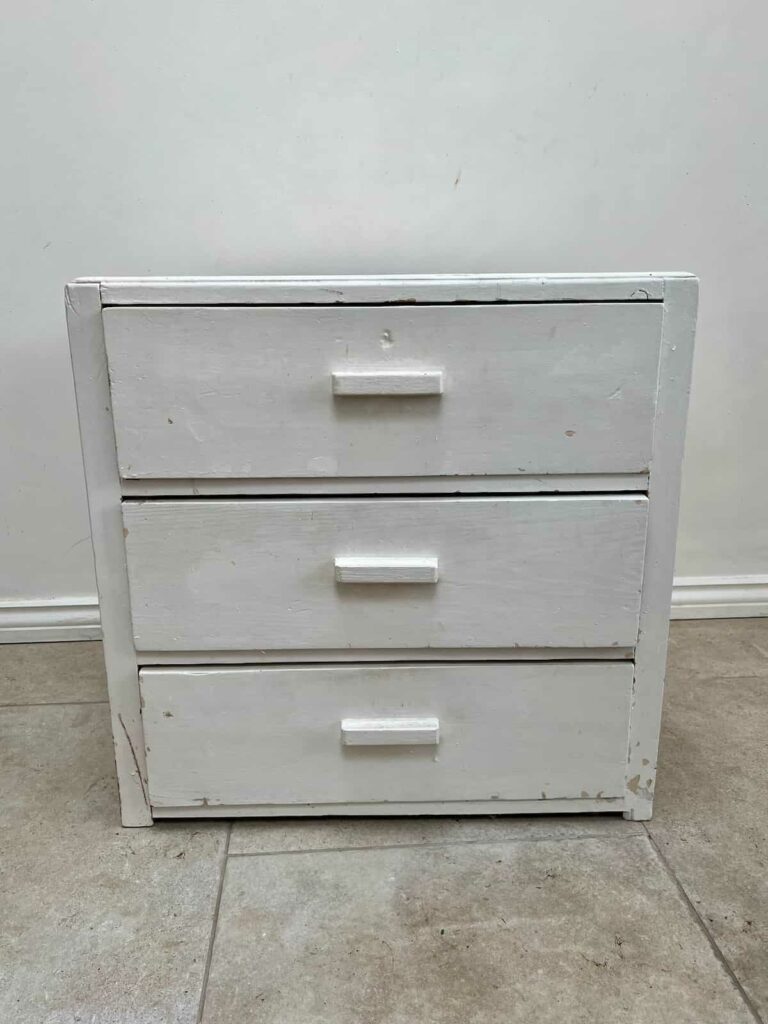
That way you can rest assured that you aren’t introducing dangerous materials into your home.
The dangers of lead-based paint is particularly serious for pregnant women, young children, and pets. And as many of us furniture refinishers have children, grandchildren and pets around the home, it can be a risk. It’s always worth doing a test to be sure.
Exposure to lead paint can cause health problems, such as lead poisoning and many other issues.
Author Notes
I’m sharing my experience and knowledge of testing for lead. Please do your own research, conduct lead-safe practices and contact a professional for advice.
How to Test Old Furniture For Lead Paint Instruction Video
You can find more video tutorials on our Youtube Channel
What Does Lead Paint Look Like?
Lead paint was banned in the US in 1978. And in the UK in 1992. So, we’ve known for a long time the dangers of traces of lead.
I got this piece of furniture from an older couple who had had it for decades. As decades could be anything from 2004 and older, it needed more investigating.
A known date of manufacture doesn’t confirm the use of lead paint. But the older it is, the greater the chances are of it having been painted with it, at some point.
I discovered that the bottom of these drawers was engraved with the date 1942. So, more than 80 years old.
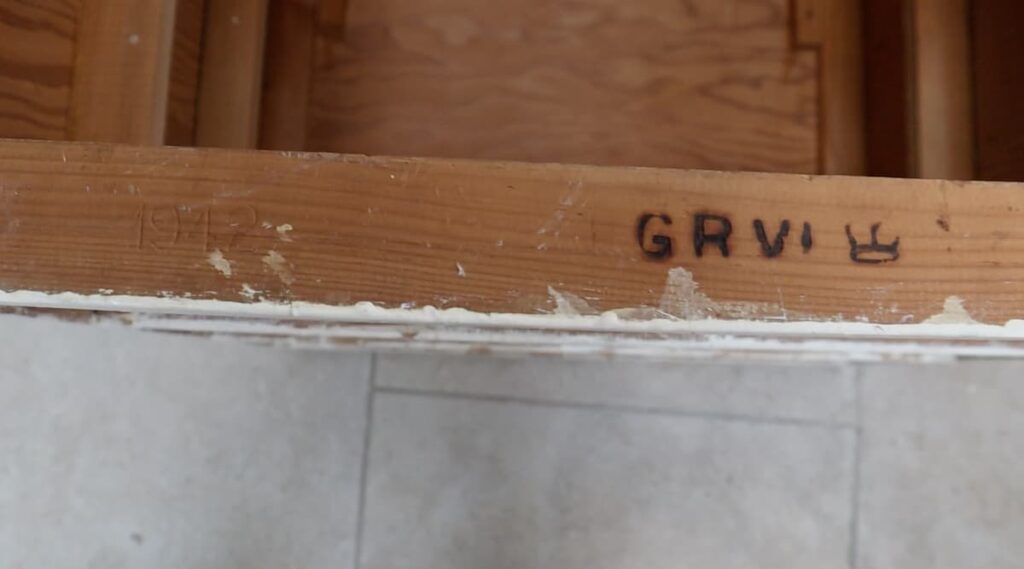
Something that also raised alarm bells was the layers of paint. It only takes one layer of paint to cause the furniture to be hazardous. It’s important to test the previous layers too, if you can get to them.
A typical sign of lead paint is an alligator-skin appearance with crackling. While that wasn’t the case with these old drawers, the paint was starting to peel. Other ways that the lead paint can show up is by appearing chalky or slightly yellowed.
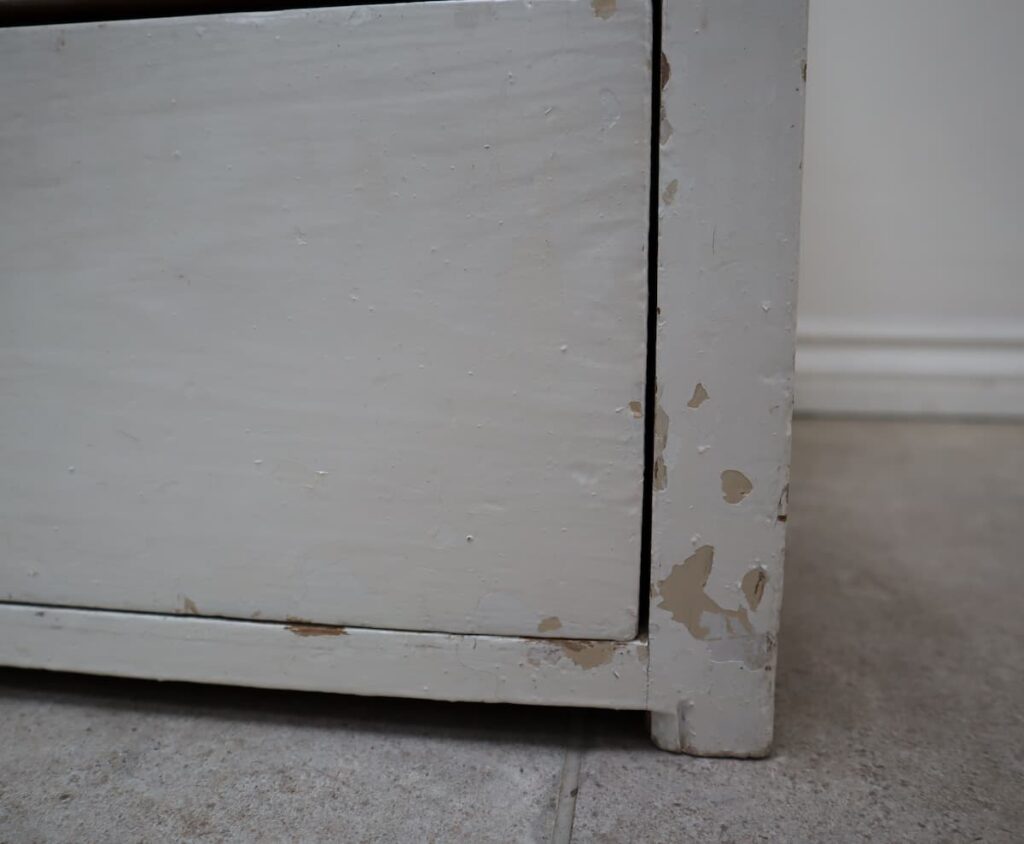
You can of course test any piece of furniture for lead paint. But with any of these signs such as crackling, the age of the piece and multiple layers of paint, it’s a good idea to test it.
How to Test for Lead Paint
A DIY testing kit is the easiest way to test for lead paint yourself. Lead test kits cost about £10-£15 or $15-$20 for 60 swabs or testing strips.
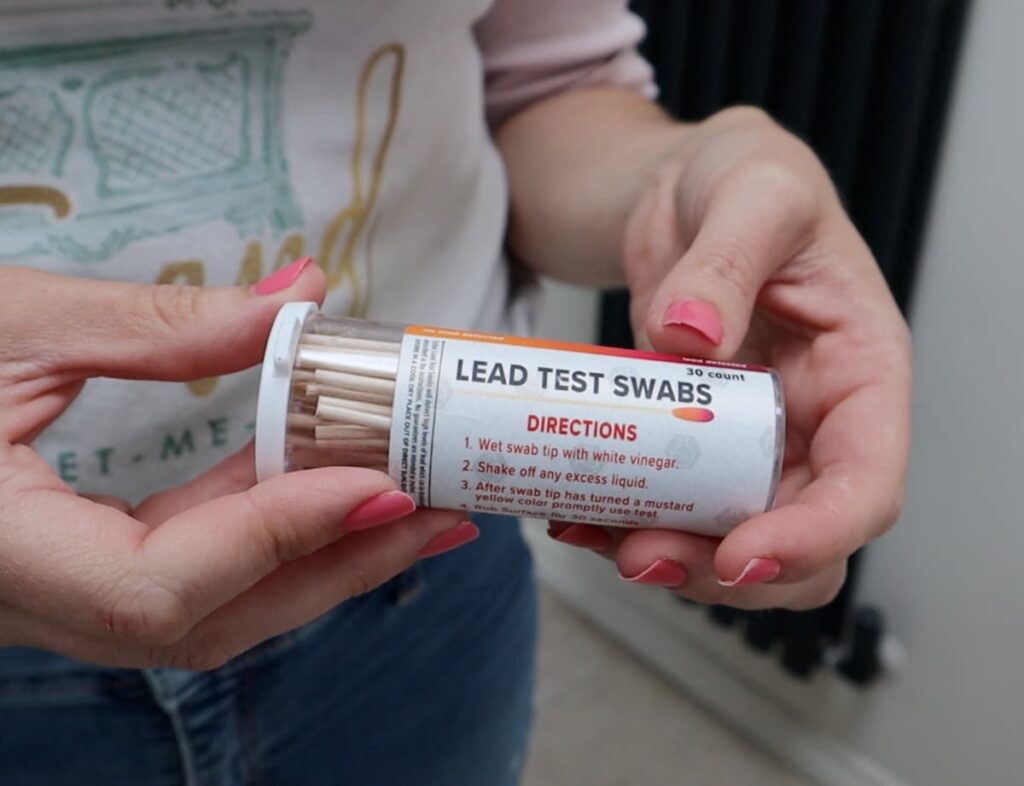
The tests are simple to use and easy to understand the results. The colour of the swab determines whether or not lead has been found.
Firstly, make sure you’re wearing gloves and a mask. This is a good rule at any time when touching something that you suspect may have lead paint.
Check that the surface is clean and dry. The best way to test is in a place on the back or in an area where it’s not so obvious.
Follow the instructions given on the lead paint test kit that you have. For this one, the first step is to dampen the swap with white vinegar.
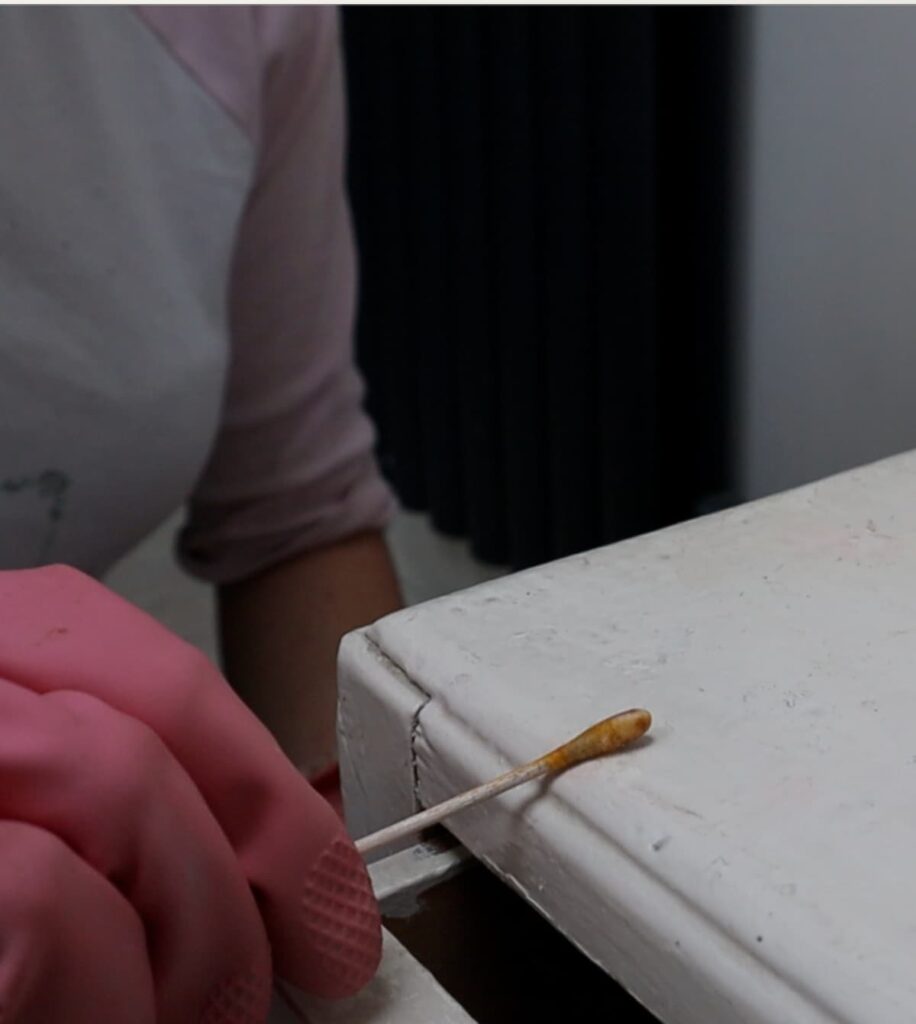
Rub the swab tip against the surface for 30-60 seconds. If there are multiple layers of paint or cracks, test all of the different areas. If there are any leftover red spots on the furniture, you can wipe them off with a wet paper towel.
Then wait for the colour of the swab to change. For this test, red indicates that there is lead present.
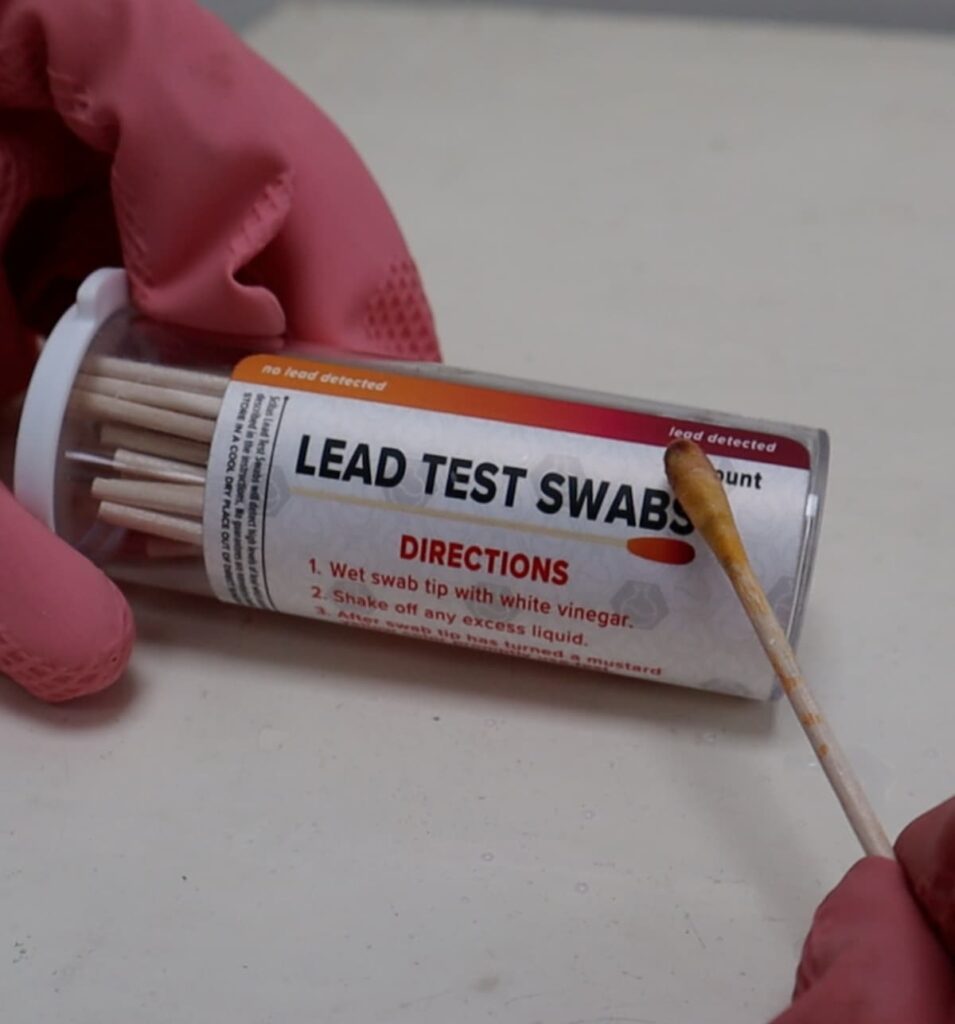
What Can You Do When You Find Lead Paint?
How to paint over lead paint
If you decide to keep the furniture then you have a couple of choices for how to manage the lead paint. You can either remove it or cover it.
But you can’t simply cover it with standard paint. It must be a specialist paint for the job called encapsulant paint. This paint forms a barrier to stop paint chips or lead dust from escaping.
The advantage of this method is that it’s less time-consuming than removing the paint. However, if you want to restore the piece to natural wood, this method won’t work for that.
Also, if the surface has chipped or loose paint, this isn’t the way to go. The paint needs to be in good condition for this protective coating to work effectively.
How to Remove Lead Paint
An alternative option to sealing in the lead paint, particularly if it is in bad condition, is to take it off. Then the problem is removed.
The beautiful chippy look you get on some old furniture? Not what you want if it involves lead paint.
You can do this by wet sanding. It needs to be wet to avoid particles floating up into the air.
You can also use a chemical stripper or heat gun. With a heat gun, only use it at a low enough temperature to soften the paint, not burn it which will create fumes.
Avoid dry scraping or sanding as this can generate large amounts of lead dust.
Due to the difficulty of safely removing lead paint, it’s advisable to get professional help with this process.
If you’re not keeping the furniture then you can take it to the dump and have it taken care of by the professionals.
Or you can pass it on to someone who wants it, who knows it has lead paint and is willing to manage it appropriately.
While this post focuses on testing older furniture, there are lots of other vintage items where lead may be. Such as walls and stairs of older homes, doors, window sills and window frames of an old house or old toys.
Answers to Your Questions about Lead Paint on Furniture
Is it safe to refinish or repaint furniture that may contain lead paint?
Refinishing or repainting furniture that contains lead paint can be safe if proper precautions are taken to minimise exposure to lead dust. Use protective gear and work safely such as using wet sanding methods.
Should I be concerned about lead exposure from antique or vintage furniture?
Yes, vintage and antique furniture may contain lead paint. The risk of lead paint should be taken seriously. Test any furniture you’re unsure about.
Are there professional services available for testing or removing lead paint from furniture?
Yes, there are professional services available for testing for the presence of lead, removing it, or encapsulating it. Search for lead paint removal companies local to you.
If you loved these tips, you’ll love these posts too:
Pin it for later – How to Test Old Furniture for Lead Paint
Hi there! I'm Rachel Bowyer, a passionate DIY enthusiast with a knack for transforming the old into something beautifully new. With a deep love for furniture painting, refinishing, and the art of crafting. I've been documenting my DIY projects and restoration journey since 2018. I specialise in techniques like decoupage, stencilling, and decor transfers. Join me as we explore the world of creativity and home improvement, one project at a time.

